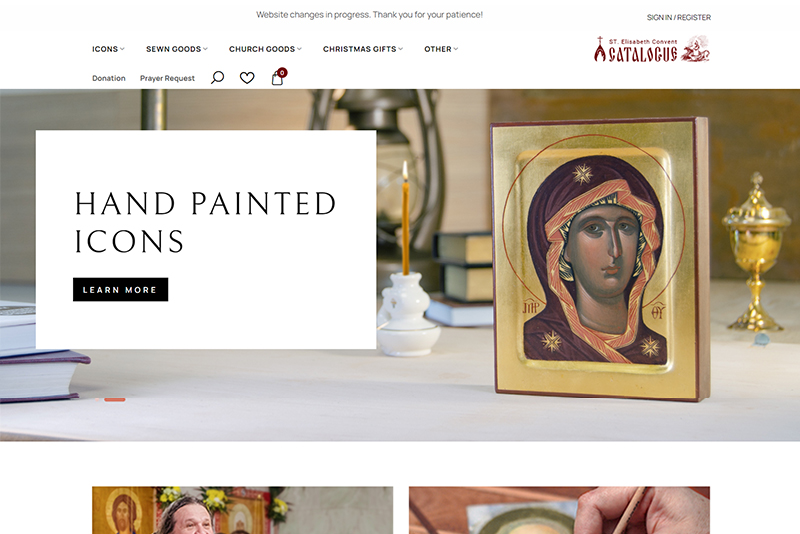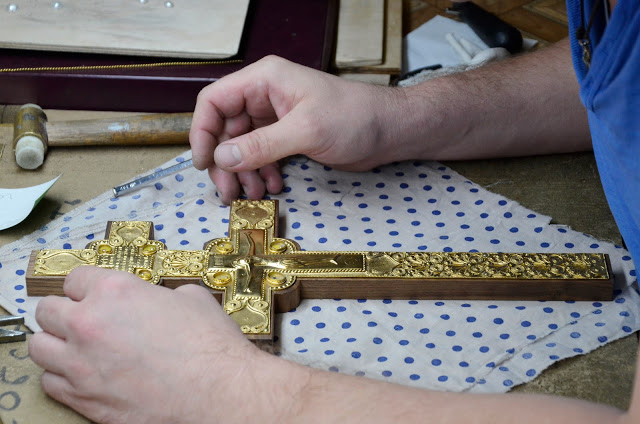
“Lord, I have loved the habitation of thy house.” A godly heart feels God’s beauty and tries to multiply it and spread it around. Churches of God are under particular care. They are adorned by the grace-inspired labor of architects, icon painters, and skilled woodworkers. Metalworkers also have a vast field for applying their creativity, especially thanks to the fact that every church requires a number of items that are inevitably made of metals, e.g., censers, vigil lamps, candle holders, and a lot more. The shine of the polished metal resembles effulgent halos on icons because it goes well with sacred objects, such as crosses, worship books, and liturgical supplies. It reflects the grace that God pours down on the faithful flock.
The Non-Ferrous Metals Workshop of St Elisabeth Convent has been doing the Lord’s work for over a decade now. It brings together various specialists: artists, chemists, solderers, and jewelers. They make perfect and lovely sanctuary items. Our craftspeople combine ancient and modern technologies of metalwork in order to make high-quality products characterized by an original and distinct design. The workshop enjoys making both serial items and custom-made items: our artisans like to demonstrate their skills.
We would like to tell you about the primary methods that make outstanding church decorations. We hope you’ll appreciate the hard work and professionalism of our craftspeople.
1. Wrought Metal
This method allows to copy a drawing from a matrix onto a thin metal sheet. We get a homogeneous-looking relief ornament with smooth transitions. Wrought decorative elements are used for decorating icons, icon cases (kiots), reliquaries, and tabernacles. Wrought metal combined with wood looks fantastic.





2. Filigree
Filigree offers an unmatched delicate pattern made of small pieces of thin coiled brass wire, placed on a metal plate in such a way so as to form a drawing, which is then soldered into the decorative pattern with fire. This method is used to decorate vigil lamps, crosses, and reliquaries. An ingenious and capable craftsperson can make certain items using only filigree.
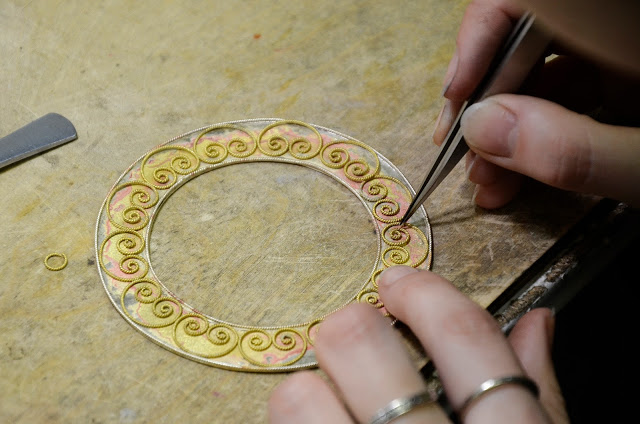
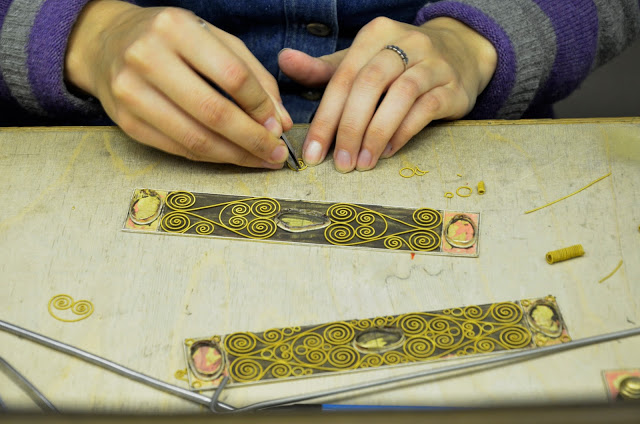
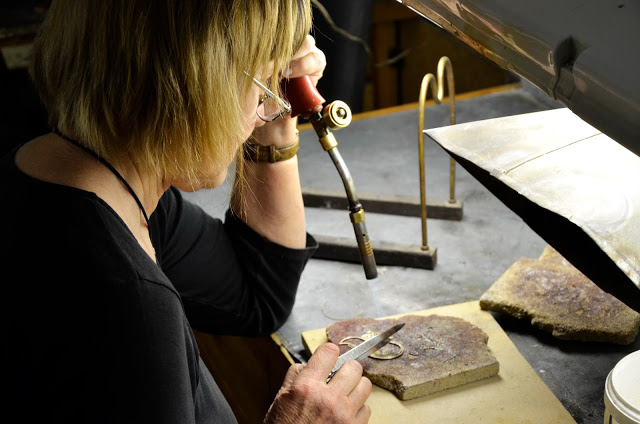
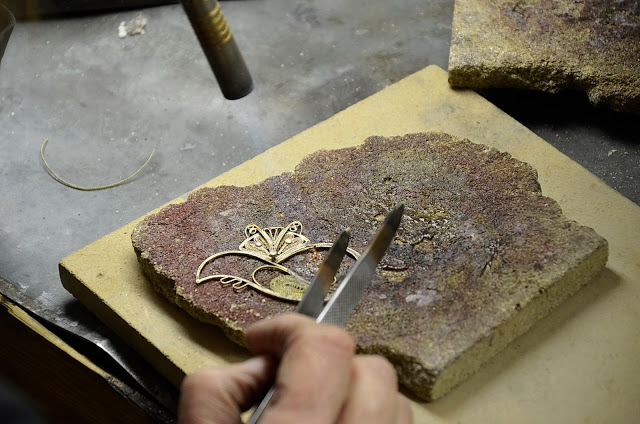
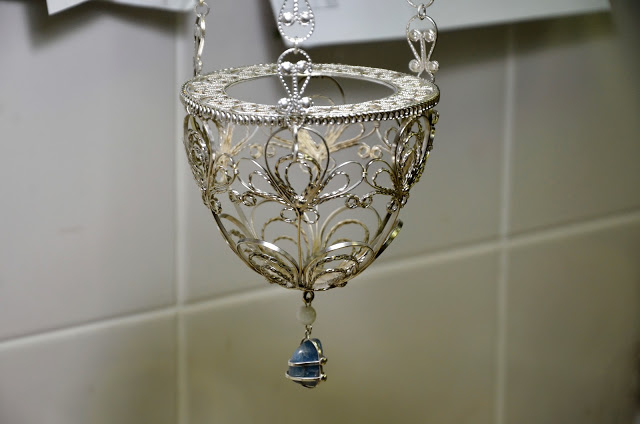
3. Casting
This technique is ideal for making solid items with complex curves and basic curved details. Initially, the piece is cut out from wax by hand to make an alabaster mold for the molten metal. It is the principal technology used for making pectoral crosses, bells, cast candle holders, and censers.
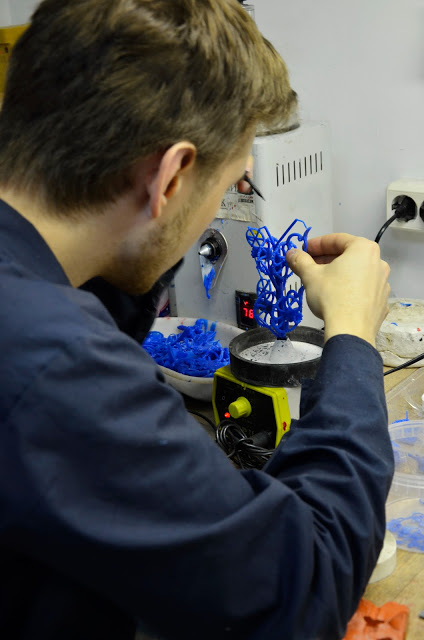
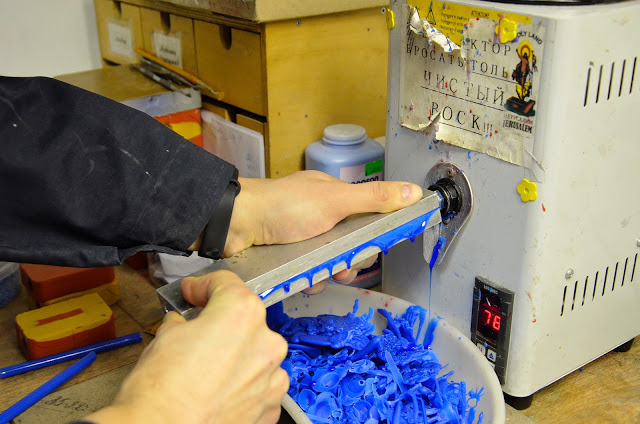
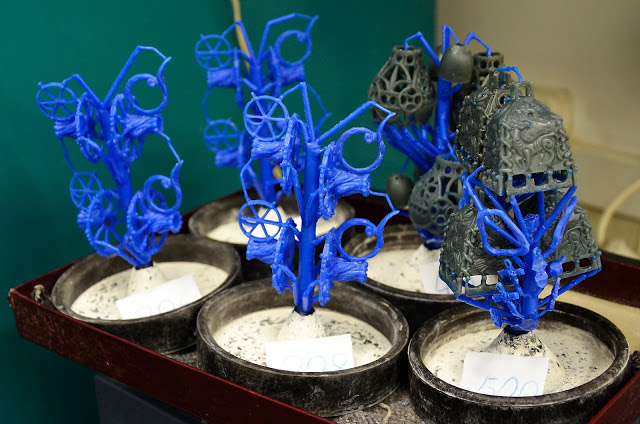
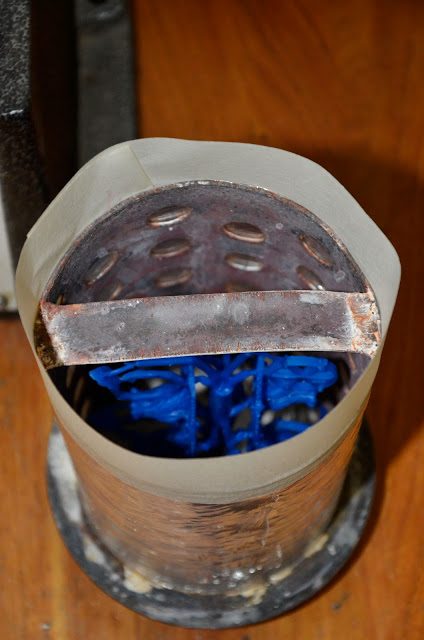
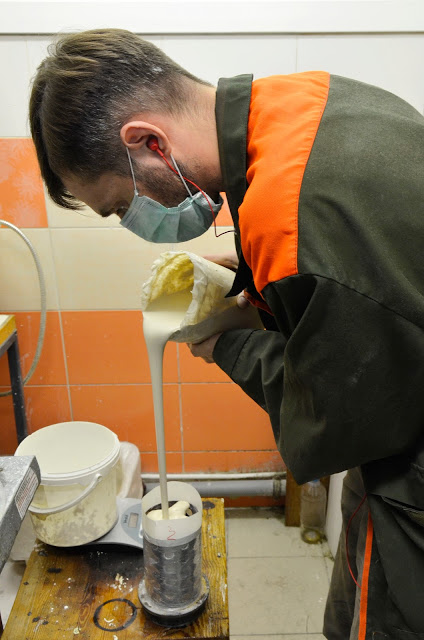
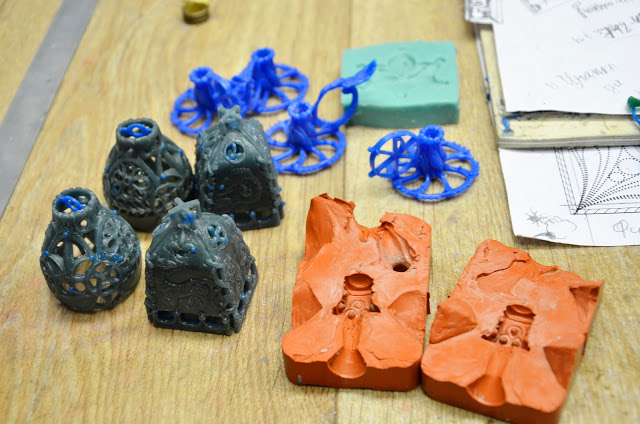
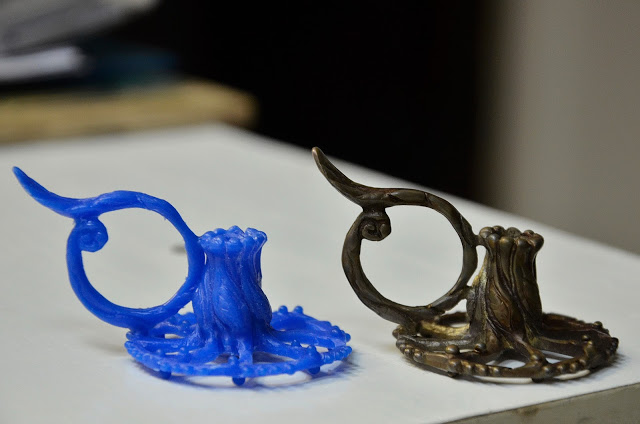
4. Etching
This method is used to furnish an iconographic or other image on metal. The item is covered with a protective acid-resistant ground. The artists scratches the drawing out on the item and then dips the item into a bath of acid, which dissolves the exposed parts and makes lines in the metal. Etching is a great way to produce the necessary image with well-defined contours on flat and convex surfaces. This method is well-suited for making inscriptions and patterns on especially thick items.
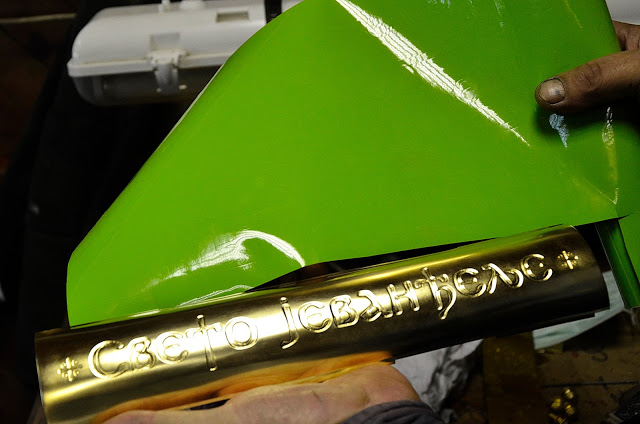
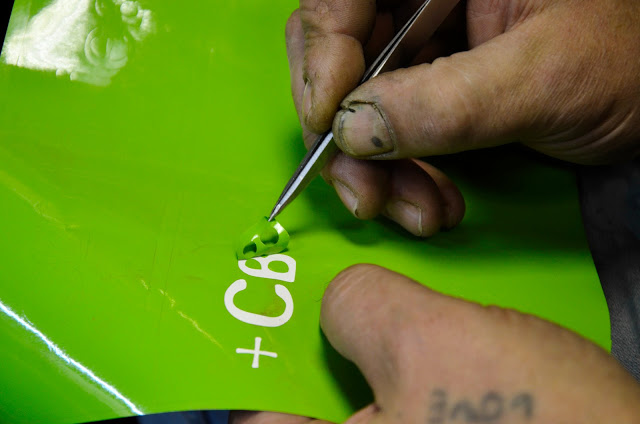
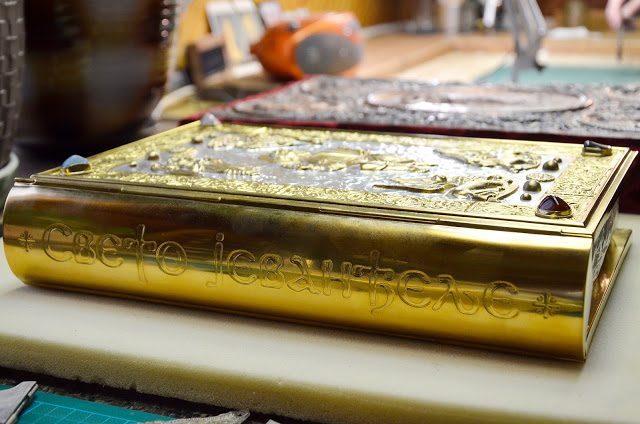
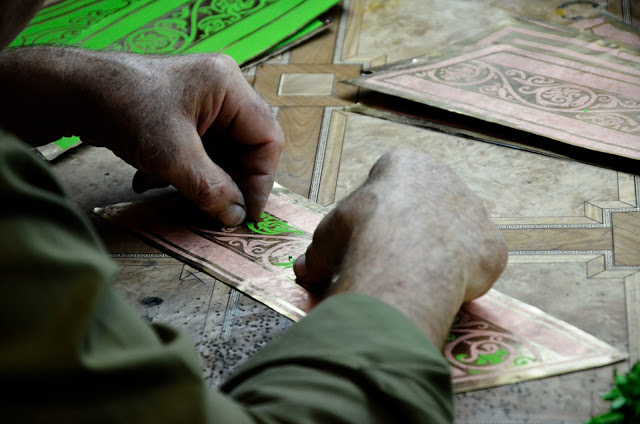
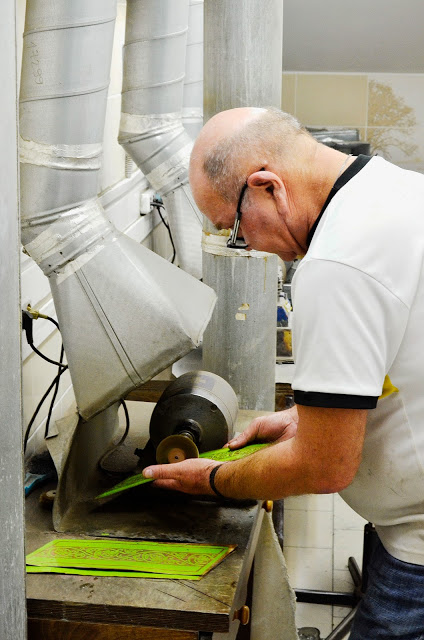
5. Electrotype
Electrotype is an electrochemical process, which makes an exact facsimile of any object having an irregular surface. There is a wire connected to a rubber mold coated with silver powder. The mold is dipped into a special chemical bath with a copper plate in it. The electric current makes copper enter the conducting surface of the mold and make up a layer of desired shape. It is thanks to electrotyping that we are able to make three-dimensional sacred images from metal and plant them in Holy Table Gospel covers and other worship book covers.
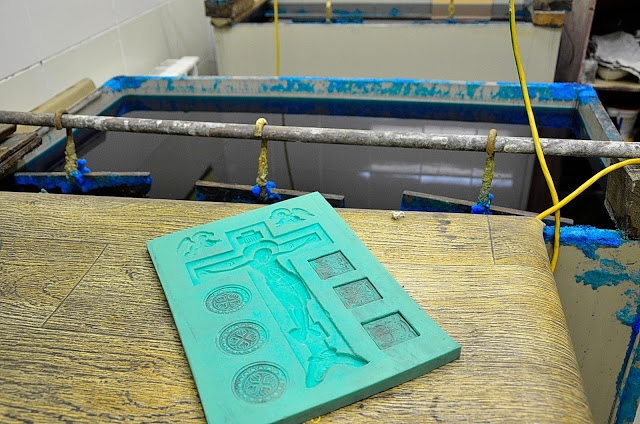
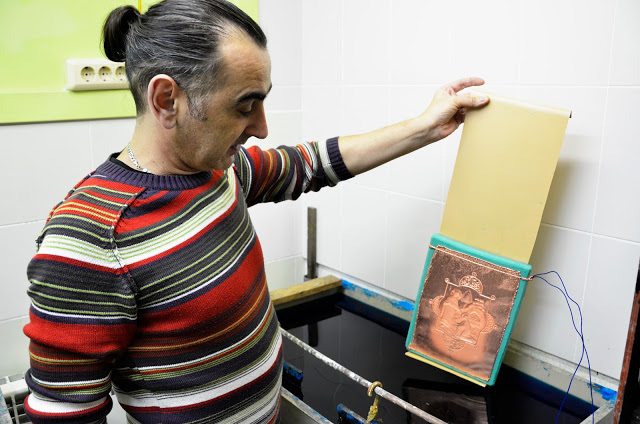
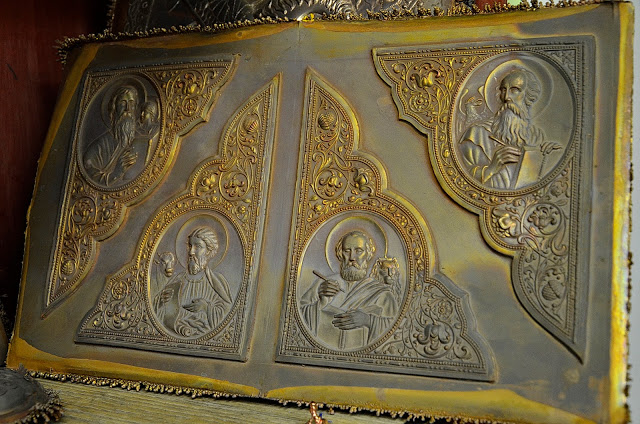
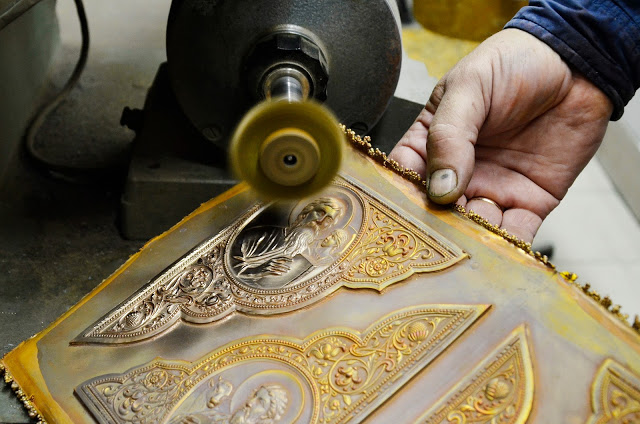
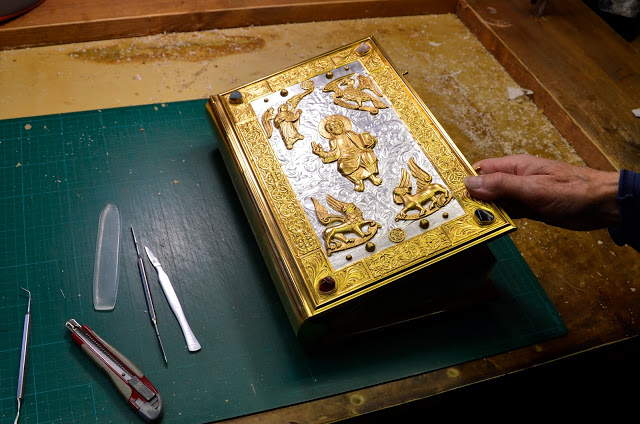
Our craftspeople typically make use of several methods at the same time. It makes it possible to fully implement their ideas, take into account the customer’s preferences, and make original items, which you can see and purchase in the Catalog of Good Deeds. Products made in our Non-Ferrous Metals Workshop are popular with many people and parishes around the world.
The Church always mentions those who bring offerings and do good works in this holy and all-venerable house in litanies during the Divine Liturgy. The history of this good work begins in the Old Testament Tabernacle, which was built according to God’s plan to serve as an example for the future generations of those who believe in His Holy Name. Centuries have passed and styles have changed but the principle of zealous commitment to making one’s faith visible by building and decorating churches, including the churches of our own souls, has remained intact. May the Lord bless everyone who works hard to achieve it.
By Vladislav Gurin,
the Master of Theology,
a PG student of the Minsk Theological Academy
The Catalog of Good Deeds, 2018

